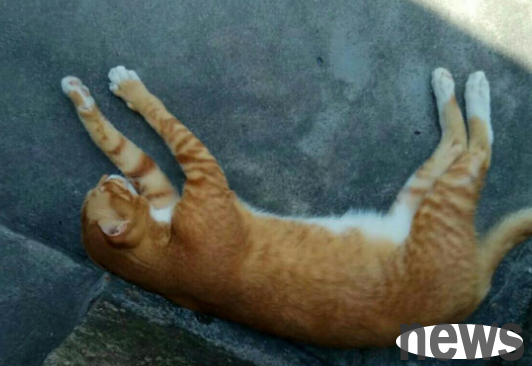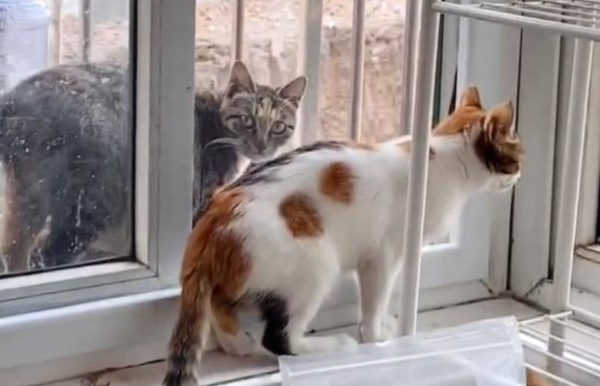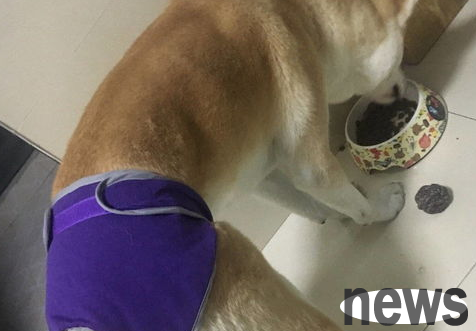Hematology interpretation and common anemia of dogs and cats
1. Introduction to hematology
1. Automatic blood analyzer: The types of machines will vary depending on their inspection methods.
2. Collection of blood samples: mainly anticoagulation with EDTA (ethylendiamine tetra-acetic acid).

3. Causes that affect the accuracy of hematological examinations include lipoemia, hemolysis, traumatic collection (such as platelet agglutination) and the urgent need for blood draw. When drawing blood, you must pay attention to the design of the anticoagulant tube, draw an appropriate amount of blood, and shake it slowly and evenly to avoid affecting the examination results. In addition, the thickness of the needle and the speed of blood suction may also affect the test results. Having correct test values is very important for monitoring anemia or disease.
4. A complete hematological examination includes observations of CBC (Complete blood counts) and blood smear. These examinations are indeed tested to help diagnose blood-related diseases.
The test items of automatic blood analyzers are generally mainly hematocrit (Hct), Total red blood cell count (RBC), Hemoglobin (Hb), Total white blood count (WBC), and Platelet count. In addition, other values will also be displayed, such as the average red blood cell volume (MCV), Mean corpuscular hemoglobin (MCH), and Mean corpuscular hemoglobin concentration (MCHC) , red cell distribution width (RDW) and some analyzers will simultaneously calculate the proportion of reticulocytes. Blood pills can be used to observe the differential WBC count and red blood cells and platelet patterns. Until now, no machine can completely replace the function of blood smear. However, whether the interpretation of hematocytology is correct or not also requires the accumulation of experience.
2. Anemia
Anemia is the most common phenomenon encountered in clinical practice, and it is not a disease. Therefore, it is very important to find the cause of anemia. In diagnosis, it can be distinguished into non-regenerating and regenerating anemia. Common causes of non-regenerative anemia include less than 3 days of blood loss, inhibition of red blood cell production, Anemia of chronic inflammation disease (AID), chronic renal failure, metabolic diseases, drug or poisoning, infectious diseases (such as parvovirus infection, parvovirus), bone marrow-related diseases, poor regeneration of red blood cells, tumors and radiation therapy, etc.
Common causes of regenerative anemia are high acute blood loss after 3 days, some short-term chronic blood loss (but iron deficiency anemia is non-regenerative anemia), and hemolysis. The phenomenon of hemolysis may include the following causes, such as Pyruvate kinase (PK) deficiency, Phosphofructokinase (PFK) deficiency, Immune-mediated hemolytic anemia (IMHA), infection-related hemolysis (l nfection-associated hemolysis, Babesiaspp.), chemical/ toxin induced hemolytic anemia (e.g bee venom), and vascular-related hemolytic anemia (Microangiopathic hemolytic anemia, etc. After determining the approximate direction of anemia, further diagnosis can be made. Some serum biochemical examinations, reconfirmation of medical history and clinical symptoms, or some special tests such as PCR, etc. can be performed to further confirm the cause.
In short, anemia is only a phenomenon, not a cause, so it is very important to find out the cause of anemia in the extreme. Blood transfusion is definitely not a treatment for anemia, it is just a means to prolong life and gain time to find the cause. Due to different causes, the treatment methods are different, and incorrect treatment can sometimes make the disease more complicated. Only the correct diagnosis can lead to the correct treatment.
3. Common causes of anemia in dogs and cats
1. Dog immune hemolytic anemia in dogs
Dog immune anemia is caused by the production of antibodies against red blood cells in the dog's body (IgG or IgM, which may cooperate with complement or no complement in the reaction), which causes damage to red blood cells. Anti-Red blood cell antibodies mainly fight antigens on the membrane of red blood cell that are normal (called primary IMHA) or have been changed (called secondary 1MHA). Any antigen that includes infectious pathogens, or has never been exposed or exposed, may bind to the red blood cell membrane and change the antigen on the dark membrane, thus causing the production of anti-red blood cell antibodies.. When the antibody binds to Ag on the RBC membrane (with or without complement reaction), it will lead to: 1. Direct intravascular hemolysis CIntravascular hemolysis is), or the aggregation of RBCs in the blood vessels; 2. RBC is accelerated to be cleared by the spleen or liver-like endothelial system (called extravascular hemolysis, extravascu la rhemolysis). Immune anemia is usually regenerated anemia, but some cases are nonregenerated anemia, which is generally believed to be caused by the destruction of a certain process of bone marrow production of RBC. Clinical symptoms are usually not obvious. If it is more acute, dark urine or even brown urine may be found, and non-specific symptoms such as general appetite loss, non-eating, weakness, laziness, exercise intolerance, rapid breathing, vomiting, and down-pulling may occur. When visiting the clinic, the physical examination may have different symptoms due to the degree of anemia, such as pale mucosa, rapid heartbeat, shortness of breath, spleen enlargement, liver enlargement, yellow plague, dark urine, fever, enlarged lymph nodes, etc. Common seeds abroad are reported as old-fashioned British shepherds, cocker spaniels, poodles, Irish Sheddars, sheepdogs, Labradors, etc., and Maltese is the most common in Taiwan. Most of the ages occur in middle-aged and elderly dogs, while there is no difference between male and female dogs.
The main methods of IMHA diagnosis include True autoaggregation on blood tablets, spherical red blood cells increase (Spherocytosis, anisocytosis, polychrom asia) and positive Coombs test. If autoaggregation occurs, the disease will be more serious and the prognosis may tend to be conservative to adverse. Treatment will be controlled by steroids, immunization, preparations, intravenous human immunoglobulin and spleen removal depending on the condition. However, if the long-term control is mostly used, steroids and immunosuppressants are used together.
2. Canine calcification
Canine calcification calcification in Asia is mainly two types: Babesi a canis and Babesia gibsoni. They are both used as the main contagious route. These two types of calcified insects will cause regenerative anemia with low color and thrombocytopenia. Because it is also a hemolytic anemia. In clinical practice, it may also appear after dark to brown urine, and then general symptoms such as loss of appetite, non-eating, weakness, laziness, exercise intolerance, and rapid breathing. The incidence of small calcified insects is relatively high in northern Taiwan. Because the small calcare worms are not easy to remove, the recurrence rate is caused by improper use of drugs or excessive use, and many problems arise. The most commonly recommended treatment strategy today is a combination of AA and CDI. But the improvement of immunity also plays an important role.

3. Immune hemolytic anemia associated with leukemia virus in cats
Female leukemia virus is a retrovirus, which is mostly infected with lymphoid and mononuclear plasmon blood cells. Therefore, depending on the infection route, different viruses were infected at the time, and different disease types developed, such as tumors (Iymphoma), immune hemolytic anemia, immune insufficiency, etc. Diagnosis method In addition to anemia, IDEXX's test set or PCR or PT-PCR can be used clinically to test whether IMHA is induced by feline leukemia.
4. Chronic renal failure causes anemia mainly due to the lack of erythropoietin (EPO) and the shortening of the survival of erythropoietin history due to azoemia. Therefore, if dogs and cats with chronic renal failure experience regular non-regenerative anemia, EPO can be administered to help hematopoietic function. Today, most of the EPOs that are still recombinant in human genes are still used, with the initial dose of 100IU/KG and Q2D. The frequency of the injection can be extended when the PCV rises to a normal low value. Because the EPO administered is a human recombinant gene, some dogs and cats may produce anti-EPO antibodies and fail.
Treatment
For dogs and cats with renewable anemia, the cause of the disease must be removed first, and blood transfusions should be given as soon as possible for severe anemia. For immune hemolytic anemia, if the blood injected is constantly damaged, adrenal glucocorticoids should be used to control it. Supplement hematopoietic substances such as iron preparations, vitamin B12, vitamin B6, and folic acid. For hemolytic and immune anemia dogs and cats, prednisone acetate tablets 1-2 mg/kg body weight, orally. 2 times a day, usually take the medicine for 2-4 weeks. If the drug treatment is ineffective, splenectomy can be performed.















